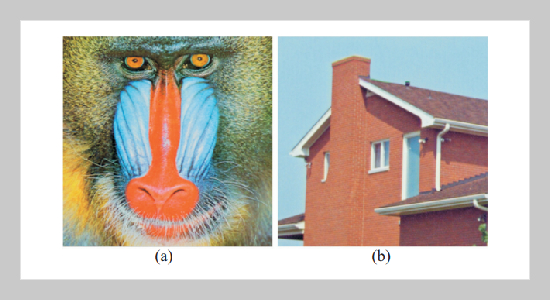REFERENCES
- [1] Kittler, J. and lllingworth, J., “Minimum Error Thresholding,” Pattern Recognition, Vol. 19, pp. 41�47 (1986).
- [2] Papamarkos, N. and Gatos, B., “A New Approach for Multithreshold Selection,” Comput. Vision Graph. Image Process. � Graph. Models Image Process., Vol. 56, pp. 357�370 (1994).
- [3] Sahoo, P. K., Soltani, S. and Wong, A. K. C., “A Survey of Thresholding Techniques,” Comput. Vision, Graph. Image Process., Vol. 41, pp. 233�260 (1988).
- [4] Reddi, S. S., Rudin, S. F. and Keshavan, H. R., “An Optimal Multiple Threshold Scheme for Image Segmentation,” IEEE Trans. on System, Man, and Cybernetics, Vol. SMC-14, pp. 661�665 (1984).
- [5] Tsai, D. M., “A Fast Thresholding Selection Procedure for Multimodal and Unimodal Histograms,” Pattern Recognition Letters, Vol. 16, pp. 653�666 (1995).
- [6] Scheunders, P., “A Comparison of Clustering Algorithms Applied to Color Image Quantization,” Pattern Recognition Letters, Vol. 18, pp. 1379�1384 (1997).
- [7] Heckbert, P., “Color Image Quantization for Frame Buffer Display,” Comput. Graph., Vol. 16, pp. 297� 307 (1982).
- [8] Wan, S. J., Prusinkiewicz, P. and Wong, S. K. M., “Variance Based Color Image Quantization for Frame Buffer Display,” Color Res. Applicat., Vol. 15, pp. 52�58 (1990).
- [9] Ashdown, I., “Octree Color Quantization,” RadiosityA Programmer’s Perspective, New York: Wiley (1994).
- [10] Gervautz, M. and Purgathofer, W., “A Simple Method for Color Quantization: Octree Quantization,” in Graphics Gems, A. S. Glassner, Ed. New York: Academic, pp. 287�293 (1990).
- [11] Cheng, G., Yang, J., Wang, K. and Wang, X., “Image Color Reduction Based on Self-Organizing Maps and Growing Self-Organizing Neural Networks,” Sixth International Conference on Hybrid Intelligent Systems, pp. 24�24 (2006).
- [12] Verevka, O., The Local K-means Algorithm for Color Image Quantization, M.Sc. dissertation, Univ. Alberta, Edmonton, AB, Canada (1995).
- [13] Frackiewicz, M. and Palus, H., “Clustering with KHarmonic Means Applied to Colour Image Quantization,” 2008 IEEE International Symposium on Signal Processing and Information Technology, pp. 52� 57 (2008).
- [14] Hsieh, I. S. and Fan, K. C., “An Adaptive Clustering Algorithm for Color Quantization,” Pattern Recognition Letters, Vol. 21, pp. 337�346 (2000).
- [15] Ashutosh, D., Bose, N. S. C., Kandula, P. and Kalra, P. K., “Modified Forward Only Counterpropogation Network (MFOCPN) for Improved Color Quantization by Entropy Based Sub-Clustering,” 2007 International Joint Conference on Neural Networks, pp. 1865�1870 (2007).
- [16] Papamarkos, N., Atsalakis, A. E. and Strouthopoulos, P., “Adaptive Color Reduction,” IEEE Trans. on System, Man, Cybernetics-Part B, Vol. 32, pp. 44�56 (2002).
- [17] Cheng, F.-C. and Chen, Y.-K., “A New Approach of Image Segmentation Based on Gray-Level Clustering,” 2009 IEEE International Symposium on Industrial Electronics, pp. 775�778 (2009).
- [18] Kaelbling, L. P., Littman, M. L. and Moore, A. W., “Reinforcement Learning: A Survey,” Journal of Artificial Intelligence Research, Vol. 4, pp. 237�285 (1996).
- [19] Holland, J. H., Adaptation in Natural and Artificial Systems, University of Michigan Press, Ann Arbor, MI (1975).
- [20] Schmidhuber, J., “A General Method for Multi-Agent Learning and Incremental Self-Improvement in Unrestricted Environments,” In Yao, X. (Ed.), Evolutionary Computation: Theory and Applications, Scientific Publ. Co., Singapore (1996).
- [21] Barto, A. G., Sutton, R. S. and Anderson, C. W., ”Neuronlike Adaptive Elements that Can Solve Difficult Learning Control Problems,” IEEE Trans. on System, Man, and Cybernetics, Vol. 13, pp. 834�846 (1983).
- [22] Sutton, R. S., “Learning to Predict by the Methods of Temporal Differences,” Machine Learning, Vol. 3, pp. 9�44 (1988).
- [23] Watkins, C. J. C. H., Learning form Delayed Rewards, Ph.D. thesis, King’s College, Cambridge, UK (1989).
- [24] Watkins, C. J. C. H. and Dayan, P., “Q-Learning,” Machine Learning, Vol. 8, pp. 279�292 (1992).
- [25] Su, M. C., Chou, C. H., Lai, E. and Lee, J., “A New Approach to Fuzzy Classifier Systems and Its Application in Self-Generating Neuro-Fuzzy Systems,” Neurocomputing, Vol. 69, pp. 586�614 (2006).
- [26] Goldberg, D., Genetic Algorithm in Search, Optimization, and Machine Learning, Addison-Welsley, MA (1989).
- [27] Ball, H. and Hall, D. I., “Some Fundamental Concepts and Synthesis Procedures for Pattern Recognition Preprocessors,” Proc. of Int. Conf. Microwaves, Circuit Theory, and Information Theory, Tokyo, Japan, pp. 281�297 (1964).
- [28] The USC-SIPI Image Database. “http://sipi.usc.edu/ database/”.
















